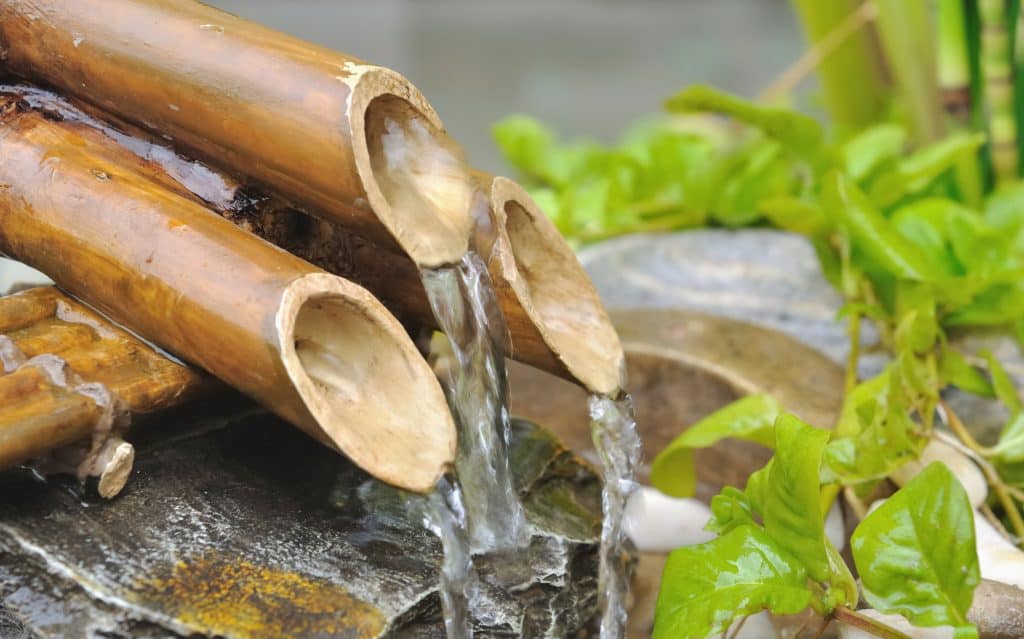Water fountains can drastically elevate the overall quality of your home. The sound of water dripping from the spout can also be calming. However, you may notice your water fountain running a little low on liquid, especially on warm summer days.
Water fountains mainly lose water through evaporation — this is most noticeable during the warmer seasons. Other factors that are more likely controllable include leaks and overall fountain design.
In the following sections, we’ll deep dive into the most common reasons why your fountain keeps losing water. We’ll also touch on how to prevent them whenever possible!
How Does My Water Fountain Lose Water?
Leaks, vegetation, and your fountain landscape design are the most common reasons your fountain keeps losing water. However, natural factors such as wind and evaporation may also have roles to play.
Leaks Resulting From Wear and Tear
Outdoor water fountains are exposed to natural elements 24 hours a day. Hence, it is no surprise that they are prone to wear and tear, resulting in leaks in the pump and tubing or even the structure that’s holding the water.
Seasonal temperature changes can cause tubings in your fountain to be brittle and, through time, easily break.
Your pets and other wildlife in the area can also chew or scratch the tubings, which lead to rips.
In more severe cases, it may not be the tubing or the pump that has the problem but the water fountain structure itself. Cracks on the fountain can occur because of improper concrete curing during its construction or a strong enough collision with a hard object.
Water Disappears Through Evaporation
When water absorbs heat to a particular extent, it turns into a gas and joins all the other gaseous particles in the atmosphere. This process is called evaporation, and it leaves your fountain thirsty.
Evaporation is most pronounced during summer, as the sun’s heat is more intense. Hence, more heat energy is available to encapsulate the water particles in your fountain and turn them from liquid to gas.
Water Gets Blown Away by Wind
The wind is also another major cause of water loss in outdoor fountains.
If you live in a windy area and your fountain is the type that shoots water upward, expect the wind to cause significant water loss.
So the next time you see wet areas around your fountain, it’s probably because of the wind.
Excessive Plant Life

If you like to adorn your fountain with plant life, you may have noticed that the water level decreases over time. In this case, the thirst for your greenery can explain the drop in water level.
Another related reason is that the plants themselves act as additional surface areas for evaporation.
Plants with long leaves that dangle over the fountain edge can also become water conduits, leading to losses.
Your Fountain Has a Low Edge
Water will always try to fill its container until it starts to spill over the edges. This behavior means that no matter the shape of the container, water would always fill up starting from the bottom until it levels with the container edge.
The same science concept applies to your outdoor fountain and may be why it keeps on losing water.
Fountains always have a reservoir that holds the water. If the edges of this reservoir are too low, it would be effortless for the circulating water to spill out.
Preventing Water Loss in Your Fountain
We wrote an outdoor fountain water conservation guide a while back. If you’d like a deep-dive into how to be mindful about the water use of your outdoor fixtures, start there. However, there are also a few different ways to help prevent your outdoor fountain from losing water.
Patch Leaks
If you notice that your outdoor fountain has problems holding water, checking for leaks is the first thing you should do.
The easiest way to check for leaks is to turn off the pump and wait for at least 24 hours to see if the water level will be steady. You can expect the water to decrease slightly due to evaporation — this is unavoidable.
However, if it goes down by more than an inch, your fountain is likely leaking.
To pinpoint the leak’s location, you may have to wait for a few days to let the fountain edges dry up. For concrete fountains, this would be easier since it would turn to a lighter shade once dry.
If you constantly see a wet edge, you have found your leak. You can then use a sealant to patch it up.
Create Shade
You may notice that many fountains, especially those found in parks, are close to trees. Such setups aren’t merely for aesthetic purposes.
The shade created by trees acts as a barrier to lessen the evaporation rate of water in fountains. If you have placed your fountain in an area with direct sunlight, consider moving it to a shaded area to minimize water loss.
However, if your outdoor fountain is fixed to the ground, you can put tall ornamental plants or large umbrellas around it to create shade.
Keep Plant Life in Check
If you have ornamental plants in the fountain, expect that they will drain some water as they grow. To lessen water loss due to plants, pull out weeds that usually grow and proliferate on the fountain edges.
Aside from absorbing water, these weeds also act as water bridges to the ground below, amplifying water loss in your fountain.
Turn Off the Pump
Turning off the pump is a huge part of addressing the evaporation issue, although it also has something to do with the wind.
When your fountain runs continuously, you can imagine the water droplets constantly being exposed to wind and the sun as they come out of the spout. This exposure allows them to get carried away when the wind blows.
If the weather forecast in your area is windy, it would be best to turn off your fountain temporarily.
Increase Fountain Edge Height and Move Fountain Pieces
If you’ve already tried the other methods listed here to lessen water loss in your fountain, you can try to increase its edge height to hold the water more thoroughly.
This solution is straightforward but would require a lot of labor and trial and error since low edges can occur in different fountain parts.
A more accessible alternative would be to decrease the amount of water you fill in the fountain in the first place.
You can turn off the pump in your fountain and take note of the waterline level by marking it. After this, remember to avoid putting water above this level.
You can also move some fountain pieces that act as splash sites for the water. Excessive splashing sends out water over the fountain edge leading to water loss.
Conclusion
Water fountains bring a relaxing vibe to your home, but persistent water loss may cause stress. Knowing which factors mainly lead to the gradual depletion of water is vital to optimizing the benefits of having a fountain installed.
Evaporation, especially in the summer, is among the most probable culprits. Hence, installing fountains to face north will minimize water loss. However, leaks also follow the list of likely reasons, not to mention wind and vegetation.
Implementing ways to minimize evaporation and plant growth and patching up leaks as soon as possible can save you volumes of water.
Sources
- Nashville Pond: 5 Tips for Maintaining Your Outdoor Water Fountain
- The Constructor: Understanding Water Leakage in Concrete Structures: Its Causes and Prevention
- Wish I Had That: Fountain Maintenance
- Liquid Art Fountains: Preventing Water Loss
- R&A Landscaping: My Brand New Water Feature Is Losing Water – Help!!
- Certified Leak Detection: How to Handle Problems With Your Outdoor Water Feature

